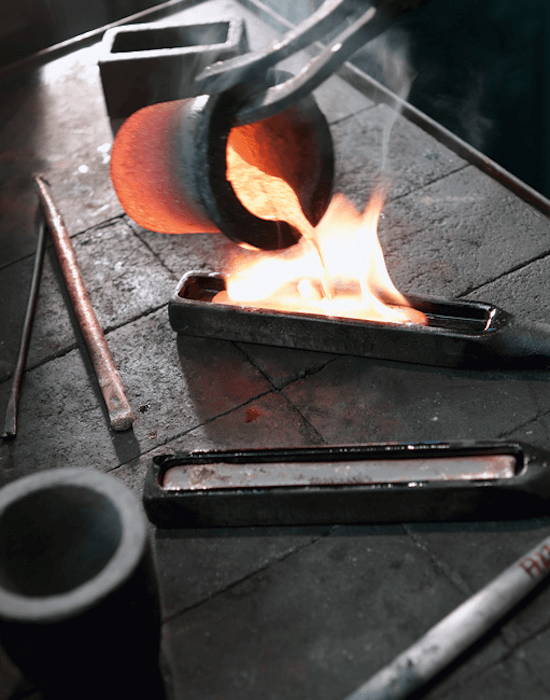
It is incredibly suggestive to watch how Arando's jewel shape up from the raw and even precious metal. It all starts by melting gold, which taken to the highest temperature approximately 1000/1090 degrees in suitable crucibles, masterly combined with other metals to confer to it the colour, the hardness and the right, it solidifies into the cast iron moulding boxes getting the shape of a raw ingot.Through a parallel working, after having created the work of art in wax sectioned over numerous parts, the same is mounted into a small tree shape paying attention that ever y element is connected through wax sticks: the small tree produced is inserted into a steel cylinder and covered with casting of refractory chalk whose temperature will subsequently be raised to 700 degrees, in a suitable oven to burn out the wax and create a vacuum inside the chalk. At this stage the gold is liquefied and poured into the refractory cylinder, filling up within a few seconds the emptiness left by the wax (from which derives the definition of It is incredibly suggestive to watch how Arando's jewel shape up from the raw and even precious metal. It all starts by melting gold, which taken to the highest temperature approximately 1000/1090 degrees in suitable crucibles, masterly combined with other metals to confer to it the colour, the hardness and the right, it solidifies into the cast iron moulding boxes getting the shape of a raw ingot.Through a parallel working, after having created the work of art in wax sectioned over numerous parts, the same is mounted into a small tree shape paying attention that ever y element is connected through wax sticks: the small tree produced is inserted into a steel cylinder and covered with casting of refractory chalk whose temperature will subsequently be raised to 700 degrees, in a suitable oven to burn out the wax and create a vacuum inside the chalk. At this stage the gold is liquefied and poured into the refractory cylinder, filling up within a few seconds the emptiness left by the wax (from which derives the definition of possible to pass to the crafty polishing stage, eliminating all previous working marks. The whole process requires a lot of time and, notwithstanding the rather demanding selection which the jewels are subjected to, it could still be possible that during the polishing process some minute faults may emerge, thus forcing the goldsmiths to destroy, even at this stage, and restart the manufacturing process anew. This would cause an increase in the production costs but it would, nevertheless, guarantee a jewel of absolute excellence. Following a final check by Master Rando the jewel is declared ready to be worn and enjoyed. Such an attentive and careful manufacturing process is rather far detached from the computerized industrial criteria productions with a low costs high volume output devoid of any feelings; something that only an artisan can instil in his product.
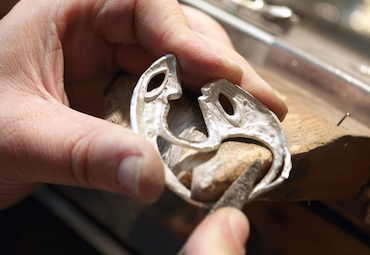
Detail of manual job by using a file.
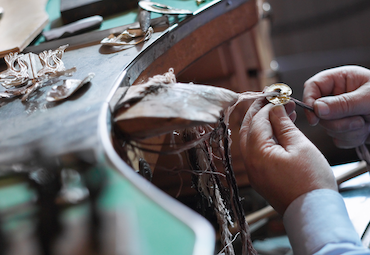
A workbench where you can feel the special atmosphere of tradition.
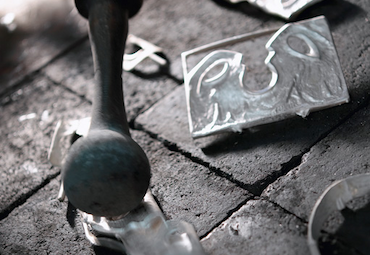
Rejects of a melting. Mr Rando with his staff check ever y pieces: if a jewel has a fault, it will be destroyed and remade. This increase the costs of production but the jewel is guaranteed as perfect.
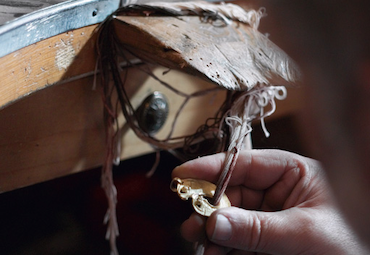
Phase of the final polishing. An artisan rubs a special rope in cotton against the piece in order to eliminate any imperfections and polish it to a mirror finish.